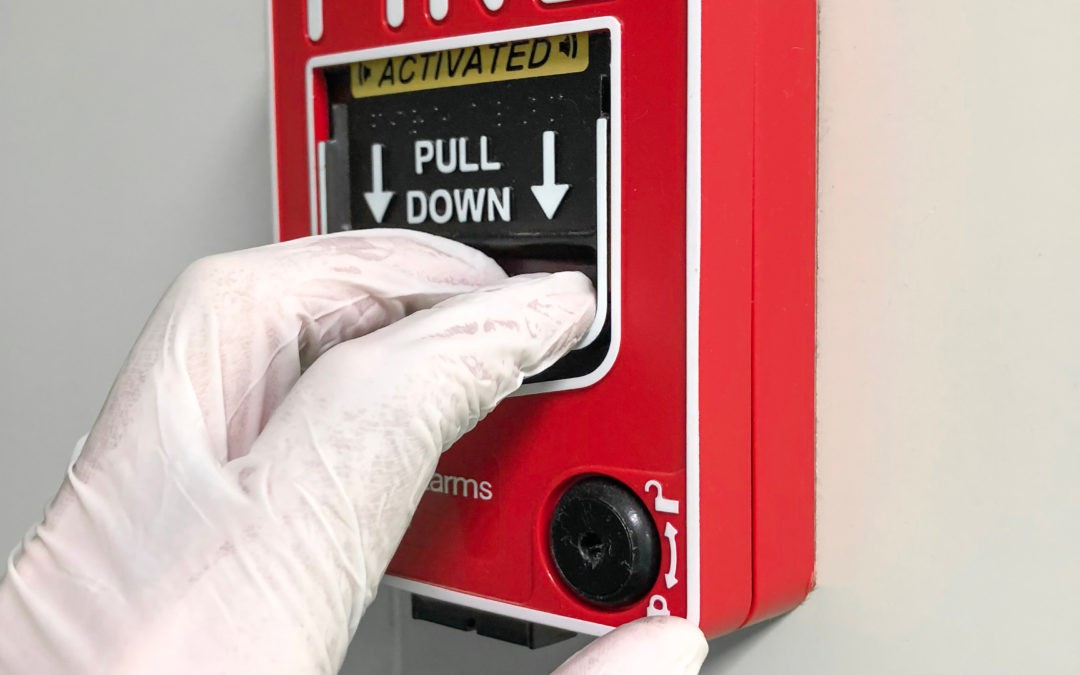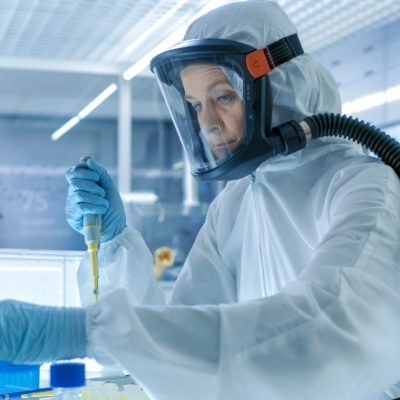
Fire Safety in Aerospace & Defense Cleanrooms
Aerospace and defense cleanrooms already work hard to protect sensitive equipment and materials from the various risks associated with contaminant particles. However, designers also need to be aware of another significant risk these cleanrooms can bring to facilities, materials, and operators: fires.
Due to the high-velocity, constantly moving air flow within them, cleanrooms present a unique challenge for traditional fire prevention and suppression. But when you’ve spent the time, energy, and money to install one in your facility, it’s critical that you’re doing everything you can to protect your investment and keep operations running.
Here’s an overview of some of the most common cleanroom fire hazards, as well as some tips on how to prevent them.
Fire Hazards in an Aerospace & Defense Cleanroom
Cleanrooms need to have high air exchange rates, fast air velocities, and uniform air flows to consistently filter contaminant particles out of the space. However, these operating conditions have a negative consequence when it comes to fire control. They make it much more difficult to detect a fire with standard fire detection and suppression systems — often resulting in fires being detected too late, after damage has already occurred.
To prevent these scenarios from happening, two things are important: 1) understanding the common fire hazards within your cleanroom, and 2) knowing the right tools and techniques to prevent them.
First, let’s dive into three of the most common cleanrooms fire hazards, which are listed below:
1. Short-Circuits
Cleanrooms are designed to host various types of machinery and equipment. For this reason, they’re usually equipped to handle a large electrical load. However, there’s always a chance of equipment overloading or short-circuiting that could cause them to catch fire.
2. Improper Handling of Heat Sources
From hot air guns to Bunsen burners, there are many heat sources that can be used within an aerospace and defense cleanroom. If any of them are mishandled or stored improperly, they can result in disastrous damage.
3. Leaking of Highly Flammable, Pyrophoric Materials
If your cleanroom deals with any liquids that can spontaneously combust on contact with air or moisture, it’s important to diligently store and secure them. Otherwise, they have high potential to leak and cause a fire or explosion. The same goes for any explosive concentrations of gases or solvent vapors.
Fire Safety Tips for Aerospace & Defense Cleanroom Design
Looking at each of those hazards, it’s easy to get nervous about something tragic happening to your own facility or employees. The good news? Most often, cleanroom fires are preventable (or at least easier to suppress and minimize damage) with the proper tools and protocols. We’ve outlined the three most important cleanroom fire safety tips below:
1. Invest in Specialized Fire Detection Equipment
Standard fire detection systems don’t always provide the best results in cleanrooms. However, there are specialized fire detectors that are specifically designed for controlled cleanroom environments. They actively work to collect random air samples at various suitable points within your cleanroom, so that any smoke can be detected at an earlier stage.
Specialized fire detectors are often integrated with voice alarms and fire extinguishing systems as well. That way, all systems can be activated as quickly as possible and can respond to any fire hazards that are detected.
2. Install Multiple Types of Fire Suppression Systems
In many cases, aerospace and defense cleanroom operations involve the handling of materials that, when combusted into flames, cannot be extinguished with water alone. For that reason, you should generally ensure that your cleanroom has multiple types of fire suppression systems.
Most often, you’ll find that properly protected cleanrooms have a water-based sprinkler system. However, they’ll also usually install various fire extinguishers that are filled with inert gases (argon or nitrogen). That way, no matter the cause of the fire, their facility and employees are well-protected.
3. Implement a Plan for Orderly Evacuation
When you think of a normal fire drill/evacuation, your immediate response is likely to just get out — wherever you can, however you can, as fast as you can. But with cleanrooms, this process often needs to be a little different, mostly because you don’t want to risk the release of any toxic substances that may be held within them upon exiting. Therefore, it’s important to put an orderly evacuation plan in place, and to make sure your cleanroom operators understand it.
Even better? Many cleanroom facilities invest in voice evacuation systems that alert and inform personnel of the situation, transmit clear instructions, and detail a safe evacuation plan. They’re a great resource to ensure proper protocols are followed, even in the event of a stressful emergency.
Need to boost your cleanroom’s fire safety measures? At Angstrom Technology, we’re here to help. Our engineers can design cleanrooms that incorporate a variety of design features, including fire suppression and alarm systems. To get started on yours, give us a call or contact us online today.





